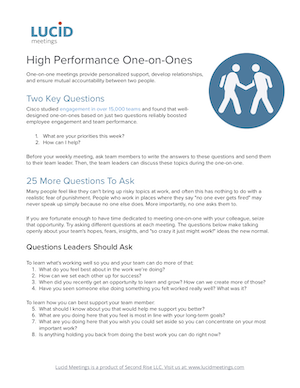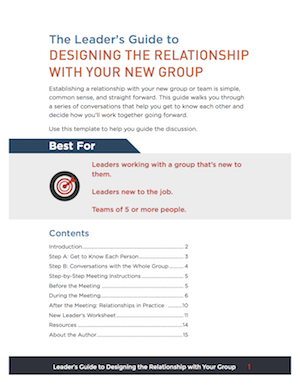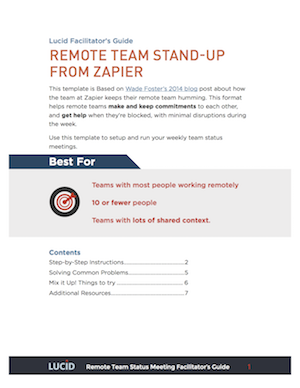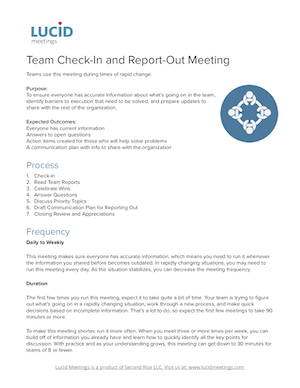Proven Step-by-Step Recipes for Hiring, Developing, and Retaining Great People
Right now, many teams are dealing with massive turnover. Reports on the “Turnover Tsunami” and “The Great Resignation” reveal staggering volatility across industries and countries. Have you driven past the restaurants in your area recently? If so, you’ve seen the desperate billboards advertising hiring bonuses, increased wages, and pleading with customers to forgive their limited services.
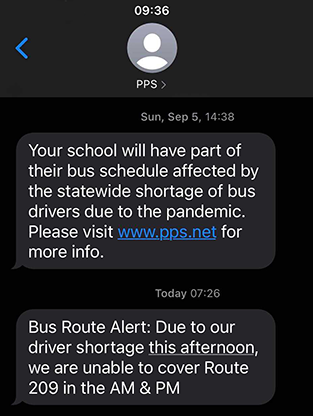
Why is this happening? Lots of reasons.
According to Gallup, it may have nothing to do with the organization, the manager, or the team; this is part of what happens when major events force people to re-evaluate their life choices. Normally, major events like graduations, marriages, births, and deaths are infrequent and sprinkled randomly across the workforce. During these last 18 months, every single person experienced a major life event all at once. Everyone is re-evaluating their life choices, and a lot of them are deciding it’s time for a change.
In short, it may not be about you right now.
Of course, if your whole team just quit, it might be entirely about you. Your company might be a terrible place to work. You might be an awful manager. Gallup also says that the Great Resignation is made worse by a pervasive Great Discontent.
Whatever the reason, labor shortages are making it hard to get work done.
The cascading failures are unraveling the supply chain. Whole teams are walking away from complicated systems, leaving their replacements with no one to tell them how it all works. This makes the new jobs especially difficult because customers haven’t relaxed their expectations. Kindness, unfortunately, is not as contagious as Covid-19.
While many are leaving their jobs, it’s likely that boredom, loneliness, or finances will drive them into new jobs soon.
What does this mean for employers and people leaders?
Like the name “Turnover Tsunami” suggests, you’re facing a messy, stressful situation driven by factors largely out of your control.
That doesn’t mean, however, that there’s nothing you can do. You can take action now to minimize the impact of rampant turnover on your teams and business.
You can host the conversations needed to:
- Understand why people are leaving and what you might do to prevent further attrition
- Fill open positions
- Adapt your way of working to better support your employees
- Develop and retain the people you have, creating a resilient workforce
In this article, I’ve assembled the resources that make it easy for you to schedule and run those conversations.
Over the past decade, we’ve worked with business coaches, team leaders, and workforce management specialists to develop a library of meeting templates. Put them together, and these templates provide a step-by-step recipe for managing “the people stuff.”
Contents
Who Should Use These Resources
In a perfect world, everyone tasked with leading a team would enjoy extensive management training, a private leadership coach, and a network of supportive peers.
Do you live in a world like that? Yeah, I don’t either.
These resources are designed to quickly fill some of those gaps. When you bring this information to your teams, you will:
- Stop the flailing. These guides give leaders clear steps to follow.
- Eliminate the mixed messages. By following the same playbooks, everyone can talk about work and performance in the same way.
- Increase transparency and trust. These guides show teams what to expect, including when and how they can influence decisions.
If you work full time with a team of 5 or more, and if you don’t already have a proven way to attract, develop, and retain team members, use these resources.
Get started today. Your results will be a million times better than the fat lot of nothing you’re doing now. Most importantly, you’ll learn best by doing.
That said, there’s a lot you could do. So let’s talk about how to get started.
What to Do Now: Decide Where to Focus First
Take a look at the graphic below. It shows a simplified way of thinking about the employee and team journey.
Before a team can do great work together, it needs to exist. Once it exists, the team needs to figure out how to work together. With those basics in place, teams need support and development opportunities to perform their best. And when someone leaves the team, you can learn things that help you hire a great replacement.
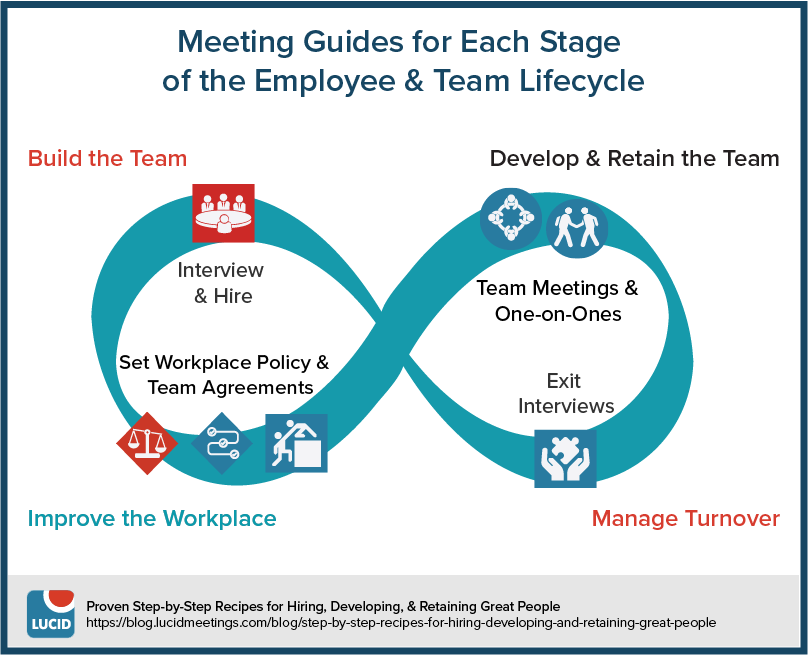
If you are currently experiencing rapid turnover, start by improving your Exit Interviews and hiring process. Use the information you learn to adjust the way your team works. Start here.
If your team exists but isn’t working together well, start by explicitly defining new workplace policies and working team agreements. Start here.
If your team knows how to get work done, focus on developing and supporting individual team members. This is the most effective way to increase job embeddedness, which research shows to be the number one way you can increase the odds of retaining employees. Start here.
Meetings for Dealing with Turnover
The Exit Interview
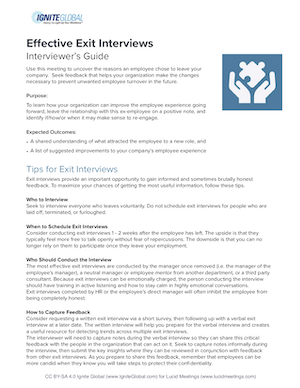 Kim Seeling Smith has conducted over 5000 exit interviews.
Kim Seeling Smith has conducted over 5000 exit interviews.
In this guide, she shares the questions she finds most useful and tips for ensuring these interviews return value to your organization.
Kim is also the creator of the Mind Reading for Managers® program, which several teams have used to dramatically reduce turnover and increase performance. More on that below.
The Hiring Process
Many companies have a hiring process that was developed before the pandemic, which they’ve tried to make go online. Successfully hiring a remote-ready team member, however, takes a different approach. Teams that need to be able to work from anywhere require better communication skills and more technical know-how on top of their job-specific skills.

In this online course, Johanna Rothman and Mark Kilby show you how to run the entire remote hiring process. The course includes planning and scheduling guides, sample interview questions, and templates for leading everything from your team kickoff to interviews to the meeting where you decide who to hire.
Meetings for Adapting How Teams Work
We’re all feeling whipped around by circumstances and more than a little weary. Should we go into the office, or not? Vaccine mandates? Reduced hours? What’s the best way to organize our work given the latest news?
Your team craves some stability. They want to know what they can expect from their leadership, and from each other.
This creates a paradox.
To improve your team’s work-life, you need to provide some certainty about when and how they’ll work.
To ensure your business’s survival, you need to constantly adapt to current events.
This meeting sequence helps you balance those competing requirements.

Using these meeting guides, senior decision-makers establish a minimal set of workplace policies and clear guidelines about when or how these policies will change. This puts a stake in the ground and establishes some certainty.
Then, within those guidelines, teams create agreements outlining how they’ll work in detail. This creates even clearer expectations at the team level, while also making it possible for teams to adapt to their unique circumstances.
To support better policy decisions and working practices, leaders receive training, meet with peers, review results with their team, and surface what they’ve discovered in regular advice council meetings.
You can read more about this meeting sequence and download individual templates in this article: A Process for Navigating Your Company’s Changing Way of Working
Or download the free packet including a process guide, scheduling worksheet, and templates for each meeting in the series.
Meetings for Developing and Retaining Your Team
The research shows that the most effective way to improve employee engagement and performance is through regular, structured one-to-one meetings between managers and their direct reports.
I’ve seen this reported in the meeting science research, multiple business studies, and by leaders at major corporations. (See a nice roundup of these reports on GetLighthouse.)
This doesn’t mean, however, that you can get these results by simply calling your team members and asking how it’s going. You should totally do that with your friends and your relatives, and it’s a great conversation for when you’re hanging around before your team meeting, but small talk isn’t an effective strategy for increasing team performance or resilience.
We’ve published several templates for one-on-one meetings over the years. If you’re only going to try one, I recommend this simple approach:
How to Run High-Performance One-on-Ones
That said, the best results come from holding a series of structured conversations covering all the key workplace topics, such as:
- Setting clear expectations and goals
- Career development plans
- Motivations and rewards
- Critical feedback, both for and from each team member
- Adapting the job to maximize each team member’s strengths
How to Lead the 5 Key Conversations that Engage and Retain Your Team
In this course, Kim Seeling Smith provides conversation guides, worksheets, and a full year’s done-for-you schedule for leading these conversations.
This program is as straightforward as you can get when it comes to fostering a resilient workforce. It’s tested, proven, and supported by both Kim and the team here at Lucid Meetings. If you want to build a strong team and help all the people leaders in your organization do the same, check it out now.
We have several leadership groups taking this program together because this makes it easy for them to support one another in the online forums. If you’re interested in bringing this program to your group too, contact us for group rates.
Regular Team Meetings that Work
So far, this article has focused on meetings that build healthy relationships. In fact, bonus! Here’s a template for those of you who are new to leading your team.
Designing the Relationship with Your New Team
This guide by Paul Axtell helps new leaders get to know their team, then host a conversation where everyone agrees on how they’ll treat one another.
Relationships are awesome.
At work, so is getting work done. Hurrah for accomplishing things!
Team cadence meetings (such as the ubiquitous weekly team meeting), are intended to maintain both healthy team relationships and work momentum. When you know that tomorrow you have to tell your team whether you did the work you said you’d do, this helps get a lot of projects over the finish line.
The best team cadence meetings involve a bit of culture building, a bit of reviewing progress, and a whole lot of rich discussion around whatever challenges the team currently faces.
Because every team’s work and culture is different, your team should design your meeting together. These meeting templates provide some great examples to get you started.
For more ideas and help with your weekly team cadence meeting, join our online Meeting Success Community. Post your question to the “Build this Meeting” channel to get great advice from business leaders and facilitators around the world.
The All Hands Where You Announce Your Meeting Plans
If you’ve read this far, you’ve learned a lot. Just by skimming this article, you’re already way ahead of everyone else on your team.
You’ll have to bring everyone else up to speed. That’s where the All-Hands meeting comes in.
There are lots of ways to run an All-Hands. When you’re hoping to change the way your company handles the meetings in the employee lifecycle, we recommend the following.
-
Be transparent about the challenge and your intended outcome.
Share the driving forces behind the changes you want to make. For example, you might share how the events of the past year caused a lot of people to question their life choices. You know this means that people on your team might be thinking about leaving, and you want to make sure you’re having these important conversations.
Let them know you hope they’ll choose to stay.
-
Present your plan as an experiment.
Explain the changes you want to make, why you think these changes can help, and how teams can share feedback about their results. Even if they don’t like your ideas, your team is much more likely to support these changes when they understand why you’re suggesting them and that you’re open to making adjustments after you learn more.
-
Provide LOTS of time for questions.
Team members may have questions for you during this first meeting. Others will think of questions in the days to come. We recommend giving people a way to submit written questions after the meeting, then scheduling a follow-up conversation to answer these questions.
To learn more about how to lead a successful all-hands, read our guide to Leading Successful All-Hands Meetings: Avoid Common Mistakes and Advance Your Mission.
Closing the Loop(s)
It’s been an interesting year. In my role as the Meeting Maven, I’ve helped many clients improve the way their teams meet.
People always want an easy answer. They want to send their leaders a list of 5 tips for better meetings, then have this magically inspire everyone to adopt new habits. When that doesn’t work and they accept that they’ll have to be more thorough, they come to us.
The ones who succeed close the loops.
They don’t just improve one meeting or even one type of meeting. They develop meeting sequences that give structure to each of the conversations along the journey.
I wrote this article to support more leaders on this journey. Some portion of this turnover tsunami is inevitable, but so much more can be prevented by holding these conversations. You can’t do it with a single one-on-one, or a rah-rah seminar, or by just adopting the latest policy fads. You have to hold the right conversations at the right time with people at all stages of the employee lifecycle.
Refer to this article as you identify the specific sequence of meetings you need to run with your teams. Share simple plans for running those meetings with your colleagues. Do this, and you’ll be taking meaningful steps to ensure your employees are engaged, productive, and committed.
My hope is that this article has made it easier to see what those steps might be.
As always, I look forward to your feedback, criticisms, and additions in the comments.

